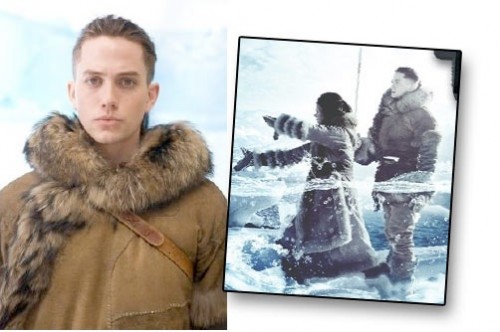By J. Chang
In acting’s historic roots on the stage and to this day, actors of varying backgrounds all take on roles of characters that may be wildly different from themselves. Due to the patriarchal attitudes on gender roles, many societies historically actually forbid women from acting, leading to many women originally being played by men. Eventually, women justly got their shot on stage, but as the stage developed, the actually need for verisimilitude on the stage faded as the space became increasingly abstracted and now, actors cross identity roles because of their talent and for art. For example, take the talented Mindy Kaling playing the role of Ben Affleck in the play, “Matt & Ben,” written by herself and Brenda Withers. This works for the stage since the theater is a largely abstracted space and simple symbolism is used to represent the constructed reality (the sets rarely actually appear to be the real thing).
Mainstream film, however, is a different beast. First of all, I’m not going to say that abstraction doesn’t exist in film. You can see it all over the films of Luis Bunuel, Jean Luc Godard or even the recent pseudo-biopic of Bob Dylan, I’m Not There, which features multiple actors (including Cate Blanchett) playing Bob Dylan.
But mainstream film, in particular, calls for a strong verisimilitude to our reality. In its case, the actual appearance matters. Not only do cars actually have to appear to be real cars, car crashes have to look like real car crashes. It’s because mainstream film usually presents a simulated reality. Granted, this simulated reality still lives by its own rules, but being a strongly visual medium, mainstream film lives and dies on visual consistency. If at any point a film fails to adhere to verisimilitude to our reality, it risks losing the audience's willingness to suspend disbelief and can consequently lose the audience altogether, becoming too much to swallow.
This frequently happens if you happen to be a doctor and watch medical dramas, or any other specialist watching a television show or movie about your specialization. It takes you out of the picture when they get it wrong. And if you do that to the majority of your audience, it's bad entertainment.
A Dash of Race
Without matters specific to race being present, there is already a tension present when it comes to cinematic presentation. Every actor is not only playing someone who they are not, they're trying to effectively make their audience believe that they are the same person that they are not. This is the actor's job. However, mainstream entertainment cinema demands visual verisimilitude. This means the actor not only have to convince the audience that they are capturing the role, but has to visually convince the audience of the same. And this is where race plays into the picture.
Race is predominantly a visual phenomena. While we can discuss the ways that race is determined outside of visual data, at least in immediate impression, most people in America determine race visually. Visual signifiers like skin color, hair texture, and body structure, broadly applied, are the primary indicators of race. When you throw such a visual concept into a world where cinematic verisimilitude is of high important, clearly film and television should care about how closely their actors can fit those identifiers of race. We wouldn't believe in a Martin Luther King, Jr. played by a white man in a biopic.
So, as we prepare to enter this discussion about casting and race, we should keep both a respect for the actor's craft, playing a role that is not themselves, as well as the understanding that what makes recorded visual entertainment media work, at least on its most basic level is an adherence to the principle of cinematic verisimilitude.
For more on the subject, see The Influence of Movies and The Best Indian Movies.
Below: White actors in the Asian/Native film The Last Airbender.


No comments:
Post a Comment